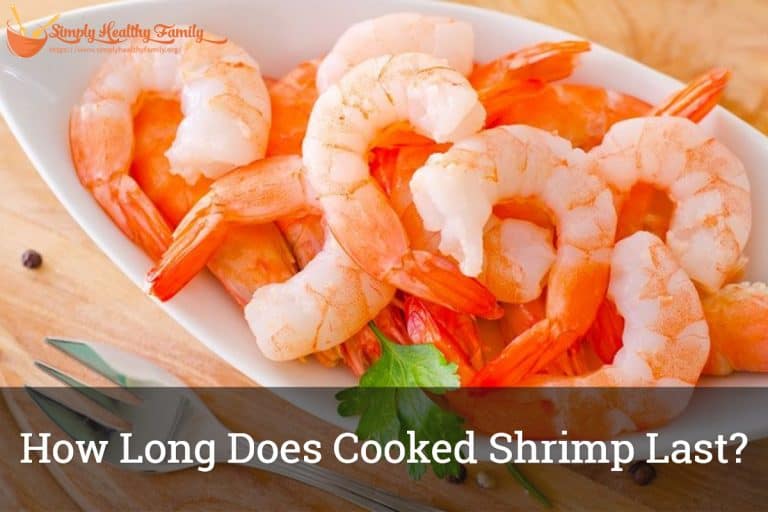What Does Trout Taste Like: Flavor Guide
Trout has a mild, slightly nutty, fishy flavor and is known to taste like salmon, catfish, and tilapia fish. Trout is sometimes referred to as “the chicken of the sea” because the fish has a bland, adaptable taste that takes on the flavors of the sauces and seasonings the fish is cooked in.
Trout is a popular fish for cooking because the fish has a delicate flavor and texture, making the fish very versatile.
How Does Trout Taste?
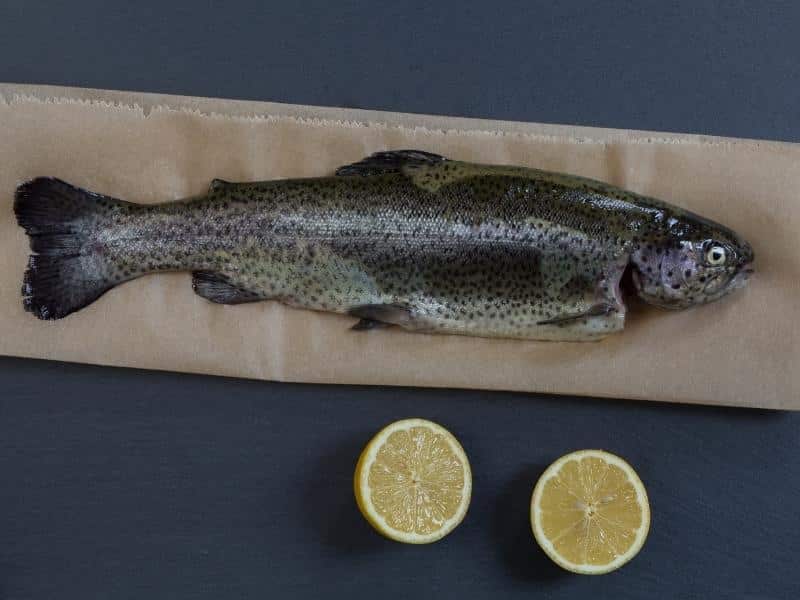
Trout has a nut-like, slightly fishy taste. Fresh, newly-caught trout has the mildest taste, while trout that is nearing its use-by date has a strong fishy odor and taste.
Different types of trouts have different flavors. Trout is classed as an oily fish, and some types of trout are oilier than others.
Does Trout Taste Good?
Yes, trout tastes good. The fish has a mild flavor that appeals to people who don’t enjoy strong fishy flavors or smells.
Trout takes on the flavors of the seasonings and oils it’s cooked with, enhancing its taste. The best-tasting trout are brown trout (which has the sharpest fish-like taste) and rainbow trout (which has a pronounced nutty taste).
Does Trout Taste Fishy?
No, trout doesn’t taste very fishy. The fish has one of the mildest fish flavors, which can be disguised with seasonings and spices if you don’t enjoy the fishy taste.
Spoiled trout has a fishy flavor and smell. Brown trout has a fishier flavor than other types of trout. To avoid a fishy flavor, opt for a mild-flavored trout, like rainbow trout.
Types of Trout & What Influences Trout Flavor?
There are several factors that affect a trout’s flavor, including:
- Where the trout was caught: Saltwater fish have a saltier flavor than freshwater fish
- How the trout was caught: Farmed trout have a fattier, more neutral taste than wild-caught fish, which typically have a more fishy flavor
- Whether the trout are spawning: Trout have a higher fat content as they approach spawning, resulting in a fishy flavor when these fats begin to oxidize
- The freshness of the fish: The fresher the trout, the milder it tastes
- The type of trout: Some trout, like sea trout, have a stronger, fishier taste than others
Rainbow Trout
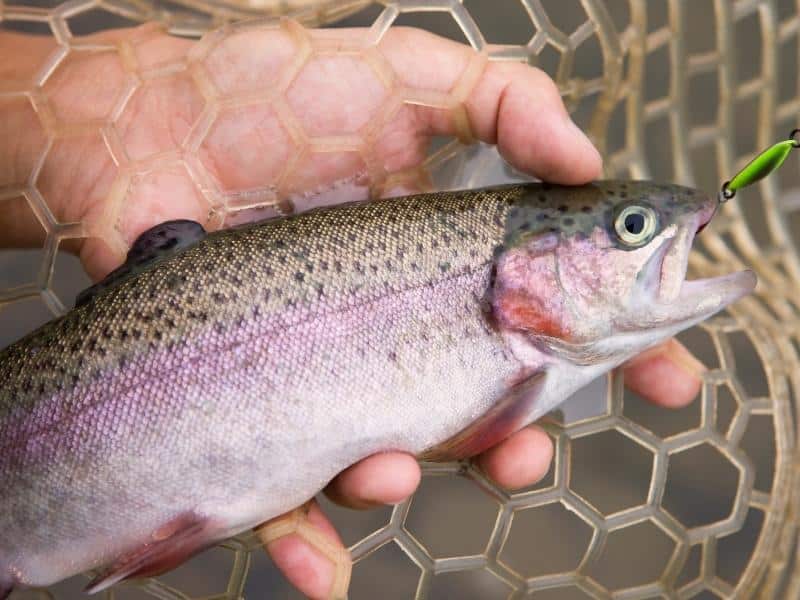
Rainbow trout has a mildly-fishy, slightly-nutty taste, and a flaky, delicate texture. This type of trout is the most popular in cooking and is used in a variety of Mediterranean dishes.
Rainbow trout goes well with seasonings and herbs like lemon, pepper, garlic, dill, olive oil, capers, and butter.
Rainbow trout can be used as a substitute for other whitefish with delicate flavors, like flounders, groupers, and tilefish.
Brown Trout
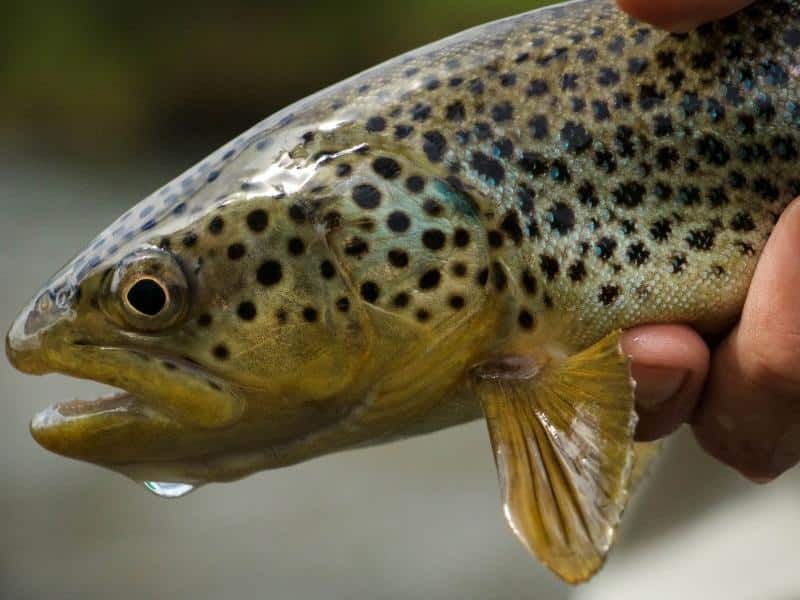
Brown trout has a stronger, fishier, and muddier flavor than other trout. The fish is popular because its robust flavors don’t require heavy seasoning like other types of trout. Brown trout is tasty when baked or grilled with garlic butter, almonds, onions, leeks, and fennel.
Brown trout is a good substitute for catfish, flounders, lake trout, and striped bass.
Brook Trout
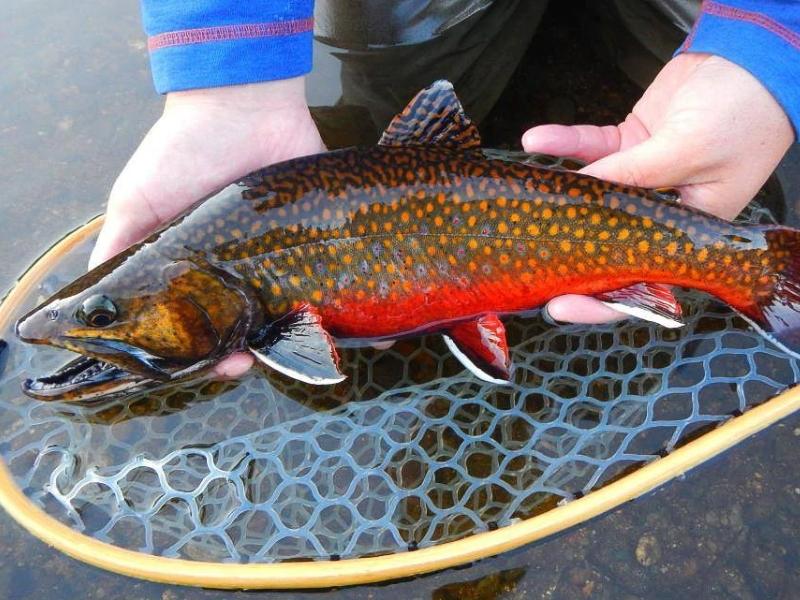
Brook trout has a delicate, almost sweet flavor compared to other trout. The fish is the purest trout species and tends to be expensive but is popular in cooking because of its tenderness and mild flavor. Brook trout tastes best when grilled with butter, parsley, and salt and pepper to taste.
Atlantic cod, halibut, rainbow trout, and white sea bass can all be substituted for brook trout.
Steelhead Trout
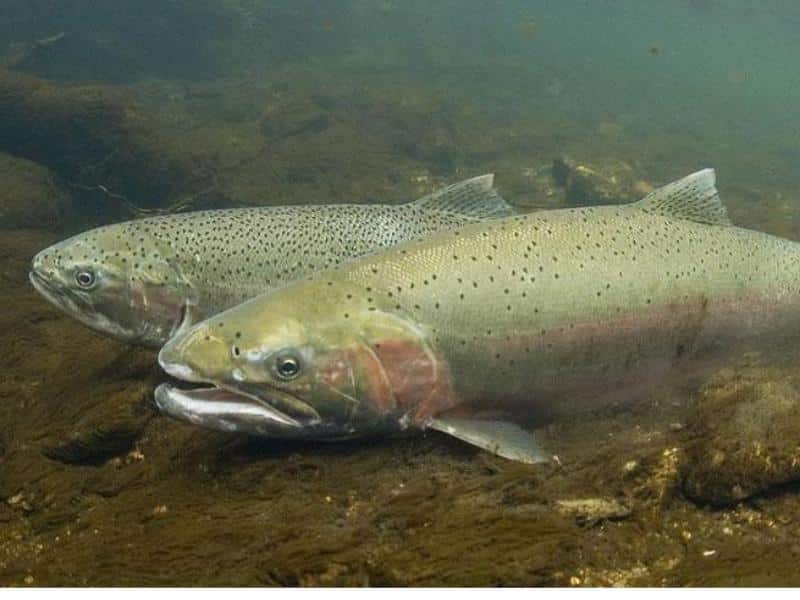
Steelhead trout is the most salmon-like trout, with a fishier taste than other types of trout. The fish is highly versatile and can be prepared in many different ways — it can be cured, pickled, smoked, grilled, cooked with the skin on, roasted, and more.
The best seasonings to pair with steelhead trout are lemon, butter, dill, olive oil, red pepper flakes, and Italian seasoning.
Steelhead trout can be used as a substitute for salmon, butterfish, and flounders.
Sea Trout
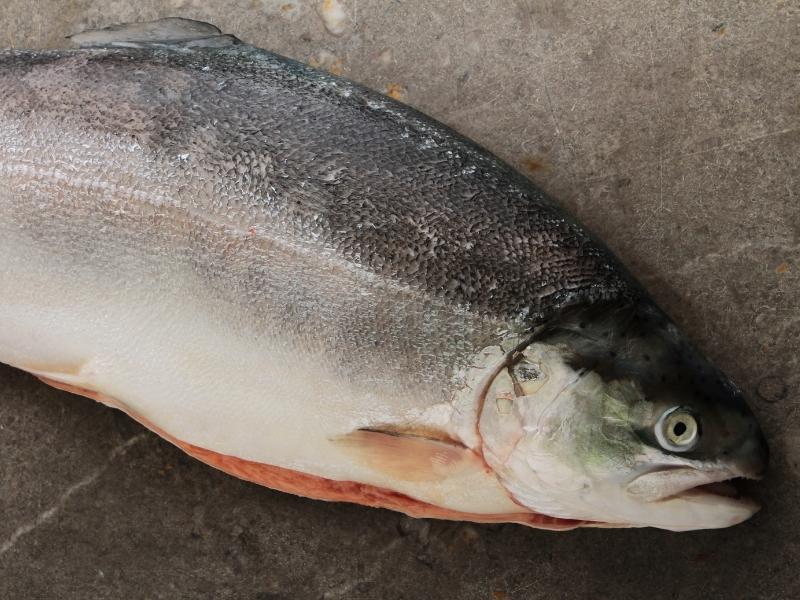
Sea trout, or ocean trout, is an orangey-pink trout with a medium flakiness and a mild-to-moderate fishy flavor. This type of trout is bigger than other trout species and doesn’t need much seasoning, making the fish popular for cooking.
The fish pairs well with robust flavorings, like chorizo, or earthy foods like summer vegetables and salads.
Sea trout can be swapped for other versatile ocean fish, like bluefish, striped bass, and Arctic char.
Which Trout Tastes Like Salmon?
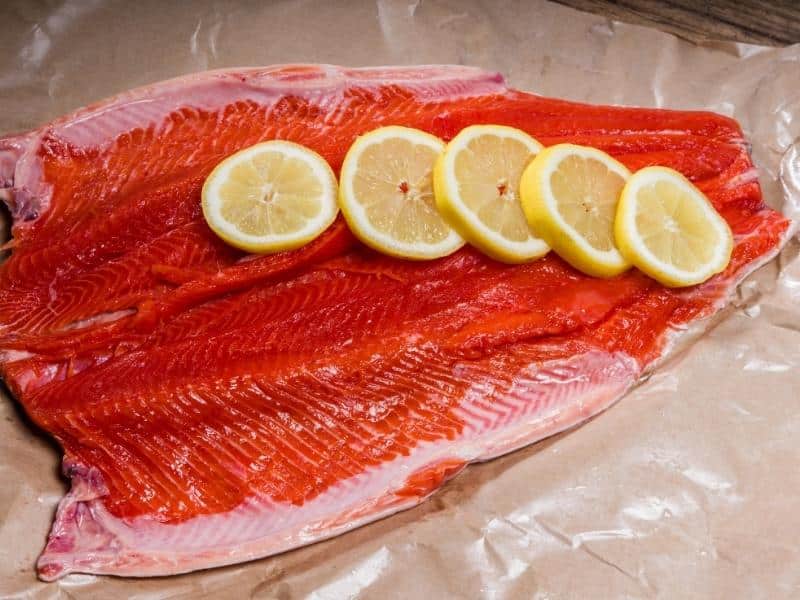
Steelhead trout has the most similar taste and appearance to salmon. Wild steelhead trout has a more intense salmon-like taste than farmed steelhead trout.
Sea trout also resembles salmon in flavor. Rainbow trout has a mild salmon-like flavor and is more widely available and affordable than sea trout or steelhead trout.
How to Improve Trout Flavor
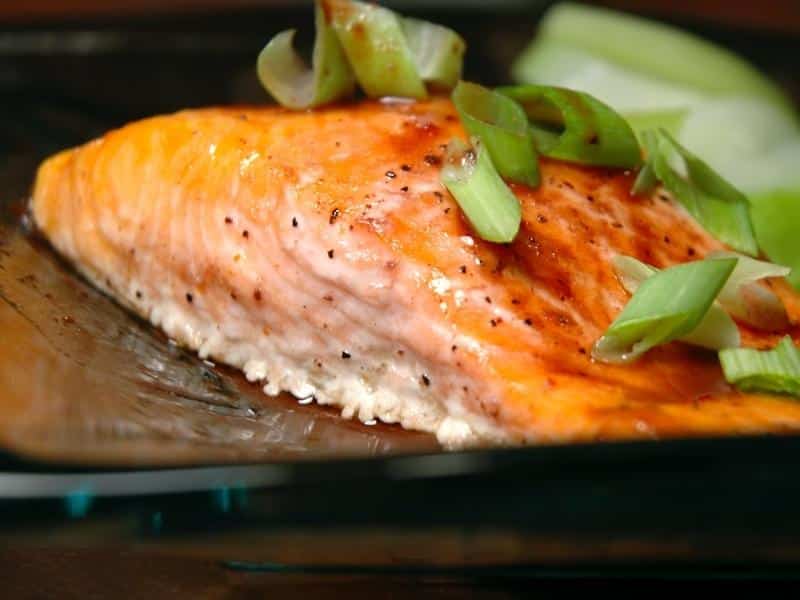
Trout is relatively flavorless, but its flavor can be enhanced using a variety of preparation and cooking methods.
If you enjoy a fishy flavor, buy saltwater trout, which is naturally fishier than farmed types of trout. To add more flavor to a mild trout, cook the trout with oils and seasonings like garlic powder, olive oil, sea salt, black pepper, and parsley.
To make the trout taste less fishy, soak it in an acid like lemon juice or vinegar, which reacts with the fish’s trimethylamine (TMA, which gives the fishy flavor) to form odorless ammonium salts. Alternatively, soak the trout in milk, which binds with TMA and removes it from the fish.
Cooking Trout
The best-tasting trout are rainbow trout and brown trout. Steelhead trout tastes most similar to salmon. To cook trout with the best flavor and texture, soak the trout in milk or lemon juice for 30 minutes and then bake the fish, wrapped in aluminum foil, with olive oil and your preferred seasonings.




